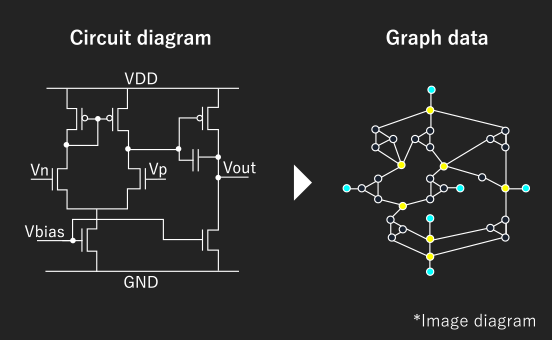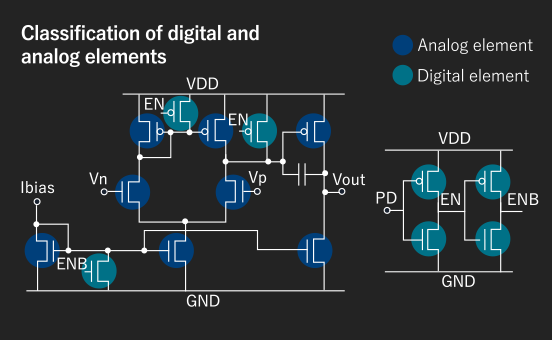Pursuit of design efficiency (advanced automation)
By focusing on analog circuit design and pursuing design efficiency, we are taking on the challenge of more advanced automation that simulates human judgment.
SANEI HYTECHS is particularly focused on analog circuit design and pursuing design efficiency. In addition to automating common routine tasks such as PVT (Process, Voltage, and Temperature) condition swing simulations and checking for circuit diagram errors that were previously checked visually, we are also challenging more advanced automation. Although it is only partially implemented, we have added decision-making capabilities that simulate human thinking using relatively advanced mathematical processing.For this reason, we refer to this advanced automation as "simple artificial intelligence" within our company (not a full-fledged artificial intelligence like those developed by companies such as Google or IBM, but rather "simple").Examples of simple artificial intelligence
For example, we have developed programs that use graph theory-based search algorithms to automatically analyze the topology (shape) of circuit diagrams and classify transistors (MOSFETs) in the circuit diagram into "digital components" and "analog components," as well as programs that determine the type of circuit (such as op-amps). By recognizing "patterns" like humans do, it becomes possible to make "advanced judgments" that are difficult to achieve through simple string or numerical comparisons. The information obtained will be utilized by separate programs that are being developed for automated verification and automated design. With automation technology, human engineers can focus on more difficult and interesting designs.

Element property database

Visualization of MOS properties (Web browser)
Achieve higher levels of automation
In addition, these programs may take a huge amount of time to process mainly due to the "search algorithms" used in processing graph data. To reduce the processing time for highly independent computational elements, we utilize APIs (Application Programming Interfaces) for parallel computing such as OpenMP to parallelize and significantly shorten processing time. We are also taking on the challenge of automating analog layout design, which is generally considered difficult. We have achieved parallelization using OpenMP in the processing of geometric operations in this area as well. We have developed software technology related to parallelization and IT technology related to workstations (servers) that perform parallel processing in-house, thereby accelerating the automation of the design process.
![[Image]SANEI HYTECHS](/en/shared/img/logo_w.png)